Clifford Garstang's Blog, page 15
November 7, 2022
I’ve Got Questions for Jeff Fearnside
Editor’s Note: This exchange is part of a series of brief interviews with emerging writers of recent or forthcoming books. If you enjoyed it, please visit other interviews in the I’ve Got Questions feature.
 Ships in the Desert by Jeff FearnsideWhat’s the title of your book? Fiction? Nonfiction? Poetry? Who is the publisher and what’s the publication date?
Ships in the Desert by Jeff FearnsideWhat’s the title of your book? Fiction? Nonfiction? Poetry? Who is the publisher and what’s the publication date?Ships in the Desert is a nonfiction trade book published in paperback and e-book by Santa Fe Writers Project (SFWP). It was released on August 1, 2022.
In a couple of sentences, what’s the book about?It’s primarily about one of the most important things in the world today: water. It traces a personal trip I took to the dying Aral Sea in Central Asia during my four years of living in Kazakhstan, connecting it to water issues around the world today, particularly in the U.S. I also talk about cultural issues and how my life back in the States has been broadened and is still strongly tied to my time living overseas.
What’s the book’s genre (for fiction and nonfiction) or primary style (for poetry)?It’s a collection of personal essays that combine aspects of memoir, travel writing, and literary journalism. There’s also a strong advocacy component, particularly in regard to promoting environmental awareness and religious tolerance.
What’s the nicest thing anyone has said about the book so far?Lori Messing McGarry, who interviewed me for Real Fiction Radio (WERA 96.7 FM), said, “In Ships in the Desert, Jeff Fearnside has written world-class essays. They bring to mind Octavio Paz and Ruszard Kapuściński.” That really blew me away! She’s interviewed so many important writers and thinkers on her program, such as Pico Iyer, Azar Nafisi, and Thrity Umrigar. It’s a thrill to be included in the same list.
What book or books is yours comparable to or a cross between? Is your book like Moby Dick or maybe it’s more like Frankenstein meets Peter Pan?I really had no model in mind when I wrote it. I knew I didn’t want to write a typical straightforward story—that I couldn’t write it that way. The issues I wanted to write about all came from my personal experiences, but I understood they also needed to be grounded in facts. Yet the stakes were too high for me to lay back and pretend to have some kind of neutral point of view. So I came up with the hybrid approach I mentioned earlier. It was something I had to feel my way through as I wrote the book, to strike the right balance between all the parts. It can be dark, but I do try to offer some hope. So yeah, I guess it’s something like Frankenstein meets Peter Pan!
Why this book? Why now?When I began writing the main portion of Ships in the Desert, the central title essay, climate change was certainly already well understood in scientific circles, but water issues weren’t being talked about as much, at least in the general public. Yet with drought becoming increasingly common all over the world, and with Lake Mead falling to worrying historic lows here in the U.S., along with other troubling problems—the Great Salt Lake is drying up and the Mississippi River has also dropped to historically low levels, for example—suddenly water is in the news everywhere. The timing of my book coming out now will, I hope, help people see and understand that we really need to pay attention to what’s happening. Not just debate and argue about it and create more study groups but actually come together and begin implementing actionable plans. Immediately. I really believe we don’t have time to waste anymore. Water is life in a real, literal sense. Places where there is little or no water cannot sustain significant populations of people. When the water is gone, the people will have to go somewhere else, putting more strain on the resources in those regions. We’re all intimately connected to each other and our environments. We need to begin living with that understanding.
Other than writing this book, what’s the best job you’ve ever had?Teaching in Kazakhstan as a Peace Corps volunteer was one of the most rewarding things I’ve ever done—it was a volunteer position, but I worked more than full-time at it. My whole career as a teacher has been rewarding, but there was something extra magical about those years in Kazakhstan. Living in another culture simply opens you up in a way that’s hard to replicate. It’s not just that everything is new and challenging. It’s that it forces you to think and act as another person—to really learn how to adapt and work with others who might seem different from you because of the cultural trappings but who you come to find aren’t different at all on a basic human level.
What do you want readers to take away from the book?I hope they will come to understand the world really is smaller and more tightly interconnected than they might already suspect. We truly are all in this together, “this” being life with all the attendant issues we face.
What food and/or music do you associate with the book?I can’t help thinking of some of my favorites from Kazakhstan, such as shashlyk and plov, which are Central Asian versions of what we would call meat kebabs and pilaf, along with lagman, a Uyghur spicy noodle dish. And green tea, lots of green tea. The soundtrack is an electric mix just like you would hear on the radio there, everything from Turkish dance hits to Bollywood songs, from American jazz and classic rock to traditional Kazakh folk tunes.
What book(s) are you reading currently?Mainly work by authors who also write about the environment and other cultures, in all genres. I just read The Imaginal Marriage (Carnegie Mellon University Press), a poetry collection by Eleanor Stanford, who was a Peace Corps Volunteer in Cape Verde, and I’m finishing a review of it now for Peace Corps Writers. Recently I picked up Tara Masih’s newest book How We Disappear (Press 53) and Joe Wilkins’ latest collection of poetry, Thieve (Lynx House Press), and I’m looking forward to diving into both of those.
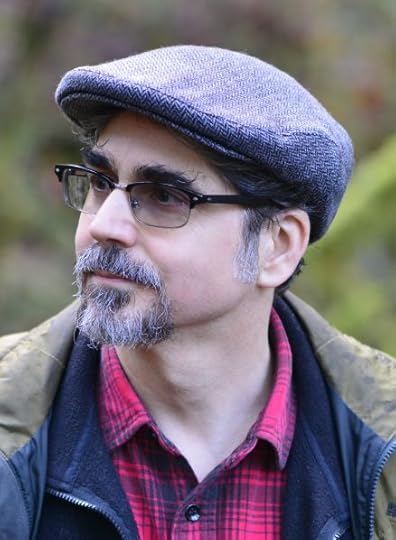 Jeff Fearnside
Jeff FearnsideLearn more about Jeff on his website.
Follow him on Facebook and Twitter
Buy the book from the publisher (Santa Fe Writers Project), Amazon, or Bookshop.org.
November 1, 2022
2022 Reading — October
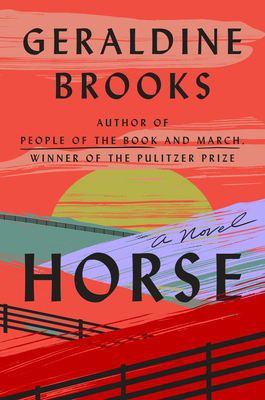
Horse by Geraldine Brooks was my book club selection for October, and I found it interesting because of the book I just finished writing, which also involves the story of an old painting and the artist who painted it. In this case, an art student and museum researcher are both interested in a 19th-century horse—its skeleton and portraits that were done of him. Brooks also gives us the story of the enslaved boy who was the horse’s groom and friend as well as the artist who did the paintings. Much of the book is based on fact, although most of the main characters, other than the horse, Lexington, are invented. I found the constant shifting of points of view somewhat unsettling, and I also didn’t find the voices of the black characters—one Nigerian, one enslaved in the pre-Civil War South—particularly credible, and I wonder if Brooks has been challenged for this cultural appropriation. The horse groom Jarrett, for example, is treated exceptionally well by his owners, and I question that. I also didn’t care much for the climax of the contemporary story, which was a little too polemical.

Ships in the Desert by Jeff Fearnside is a collection of essays about the author’s experience in Kazakhstan, first as a Peace Corps Volunteer and later as a grants manager. A couple of the essays—one about the drying up of the Aral Sea and another about the problem of missionaries in a Muslim country—reminded me of the work of Peter Hesler, another former PCV, who has written extensively about China, where he served, and Egypt. A few of the pieces are more personal, reflecting on his own experience, and those are interesting and revealing, too. Published by the Santa Fe Writers Project, it’s a well-done collection.
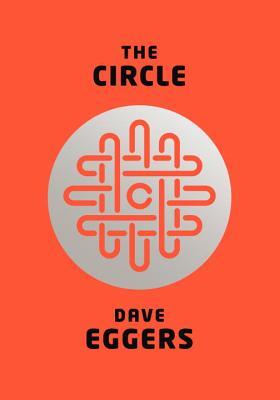
The Circle by Dave Eggers is one of the creepiest, most entertaining books I’ve read in a long time. Ron Charles, the Washington Post reviewer, thought it was too unsubtle, but I think that was part of the point. The story is about Mae Holland, a young woman who goes to work for a company called The Circle, which is part Google, part Facebook/Twitter, and maybe part Amazon. Day by day it grows more intrusive into people’s lives and its powers of surveillance are downright scary. But people like Mae seem to be willing to sacrifice their privacy in exchange for the benefits of this all-knowing, all-seeing power: reduced crime, better healthcare, honesty in all things. It becomes nearly impossible for her to have a private conversation with anyone, unless she takes a 3-minute toilet break, at which time she’s allowed to shut off her camera and audio. Eggers ramps up this deterioration of privacy over the course of a 500-page book, and the reader wonders if Mae will ever realize the truth of what’s going on. Very glad I read this one.

The Middle of Somewhere by Suzanne Stryk is a wonderful book unlike any other I’ve read. Stryk is a visual artist I came to know through a private arts program that offers a farm retreat in rural Virginia (near my home) to [mostly] students from North Carolina. They spend most of their time creating art, but they also do some reading and writing, which is where I came in. During one session—it was during the pandemic, so conducted on Zoom—I introduced them to various writings, mostly poetry, selected because of the theme Stryk had introduced in the visual realm. Anyway, since then, this book came out, a project to revisit Thomas Jefferson’s Notes on the State of Virginia. The result was a collection of artworks inspired by the natural world and this book—a narrative of her travels around the Commonwealth and her choices in creating the artwork.

Lucy by the Sea by Elizabeth Strout is the latest in the series of novels about Lucy Barton, a novelist who was born in extreme poverty, used a scholarship to college to escape her surroundings, and now, in her 60s, recently widowed, she and her first husband flee New York City during the pandemic and rent a house together in Maine. While she’s there, stuff happens—friends die, her children go through various crises, and her relationship with her ex-husband changes. As with other Strout novels, the plot—if there is a plot—is secondary to the characters and circumstances. Lucy spends these 280 or so pages juggling her emotions and relationships with William, her ex-husband, her daughters, her friends, her family, and trying always to see where she fits in it all.

Monkey in Residence & Other Speculations by Xu Xi (Signal 8 Press November 1) is a collection of essays and stories mostly about Hong Kong and the experience of leaving and coming back. I was asked to write a blurb: “To know Hong Kong—or even to be curious about the city and its people—is to love Xu Xi’s work. Monkey in Residence is a brilliant blend of fact and fiction that captures the conundrum that is modern Hong Kong: once British, now Chinese, still seeking its own identity and freedom. The diverse pieces in this collection—some dark, some funny, some poignant—paint a portrait of a writer who has had a long love affair with a city, despite its imperfections, and knows she will never quite be able to leave it behind. Xu Xi’s tantalizing language, sprinkled with Chinese, is an absolute delight to read.”
October 27, 2022
I’ve Got Questions for Paul Duffy
Editor’s Note: This exchange is part of a series of brief interviews with emerging writers of recent or forthcoming books. If you enjoyed it, please visit other interviews in the I’ve Got Questions feature.
 Run with the Hare, Hunt with the Hound by Paul DuffyWhat’s the title of your book? Fiction? Nonfiction? Poetry? Who is the publisher and what’s the publication date?
Run with the Hare, Hunt with the Hound by Paul DuffyWhat’s the title of your book? Fiction? Nonfiction? Poetry? Who is the publisher and what’s the publication date?Run with the Hare, Hunt with the Hound is a work of fiction, published by the Cennan imprint of Cynren Books. The official publication date was 11th October 2022
In a couple of sentences, what’s the book about?Simply put, it’s the story of the twelfth-century Norman invasion of Gaelic Ireland as experienced by Alberic, the son of a Norman slave in Gaelic society. Alberic experiences the chaos and opportunity presented by the breaking of an ancient order and the resultant. As he navigates a land of war, his own conflicted and shifting loyalties are complicated by his love for a Gaelic woman – Ness, and his oath to a Norman knight – de Lacy.
What’s the book’s genre (for fiction and nonfiction) or primary style (for poetry)?The book is historical fiction on the ‘literary’ side of that genre’s broad spectrum.
What’s the nicest thing anyone has said about the book so far?Elizabeth Chadwick, one of the pre-eminent authors of Medieval Fiction, said that the book is a ‘shining example of what historical fiction should be’ adding that it is ‘definitely one of my books of the year’. That was pretty nice!
What book or books is yours comparable to or a cross between? [Is your book like Moby Dick or maybe it’s more like Frankenstein meets Peter Pan?]The lyricism and reflectiveness bedded in the Irish landscape, I think, comes from JP Donleavy whose style (as opposed to subject matter) marked me as a young adult. The sudden and explosive scenes of action bedded within carefully observed humanity and authenticity/duty of care to the period owe a debt to Patrick O’Brien….so, I suppose, as absurd as it sounds, the Ginger Man meets Master and Commander! Though perhaps that’s not so strange given that both Donleavy and O’Brien were, by their own admission, heavily in debt to Joyce, an unavoidable presence on any literary journey through Dublin…even one set in the twelfth century.
Why this book? Why now?This book arises from an unexpected meeting with another Irishman – Hugh de Lacy -almost 20 years ago in a library on a backstreet in Toulouse. For my part, I was researching the medieval fortifications of that city during the crusade against the Cathars, while he was leading a charge against the walls! My research into how he ended up in the pages of a medieval Occitan poem, his exile from Ireland and his years as a crusader lord unearthed a story I’ve been writing about ever since. Having published on these fascinating events in academic books, journals, and conferences, I was drawn to explore the possibility of telling the story in a different, more compelling way – giving rise to the novel, which has, I suppose, ended up as a kind of ‘origin story’.
Other than writing this book, what’s the best job you’ve ever had?In my day job, I work as an archaeologist directing large excavations, mainly in Medieval Dublin, though I’ve worked in Britain, France, and Australia also. While it’s not always as exciting and glamorous as you might imagine, it is always a privilege to be tasked with unearthing and curating the past and the stories of the people who dwell there.
What do you want readers to take away from the book?The medieval period is so often portrayed as a blood-soaked tableau of violent quests for glory and honour amid proto-nationalistic fervor. I want the reader to glimpse a period alive and humorous and full of conflicted, complicated people who lived, loved and survived in whatever way was available to them.
What food and/or music do you associate with the book?This is the playlist that I wrote the book to, late at night. Atmospheric, charged music with mood and, crucially…forward momentum!
What book(s) are you reading currently?I was three years writing this book and, in that time, I didn’t read any historical fiction, especially none that was set in medieval Europe for fear of unconsciously taking on another author’s voice or treatment. I’m catching up now, reading and very much enjoying the convincingly bucolic dialects of To Calais in Ordinary Time by James Meek.
 Paul Duffy
Paul DuffyLearn more about Paul on his website.
Follow him on Twitter.
Buy the book from the publisher, Amazon, or Bookshop.org.
October 24, 2022
I’ve Got Questions for Elizabeth Winthrop Alsop
Editor’s Note: This exchange is part of a series of brief interviews with emerging writers of recent or forthcoming books. If you enjoyed it, please visit other interviews in the I’ve Got Questions feature.
 Daughter of Spies by Elizabeth Winthrop AlsopWhat’s the title of your book? Fiction? Nonfiction? Poetry? Who is the publisher and what’s the publication date?
Daughter of Spies by Elizabeth Winthrop AlsopWhat’s the title of your book? Fiction? Nonfiction? Poetry? Who is the publisher and what’s the publication date?Daughter of Spies: Wartime Secrets, Family Lies. Memoir.Regal House Publishing, 10.25.2022
In a couple of sentences, what’s the book about?The daughter of a famous journalist and his young British bride looks backward at her parents’ storied love affair in London during World War II, discovering that their wartime secret-keeping became a habit that undermined the peacetime marriage.
What’s the book’s genre (for fiction and nonfiction) or primary style (for poetry)?Non-fiction, memoir.
What’s the nicest thing anyone has said about the book so far?A beautifully written, deeply honest, memoir. The tales of London during the blitz, and the inside look at the author’s family life when her parents lived at the center of power in Cold War Washington are both compelling and revealing. Most of all, Alsop illuminates her mother’s life with poignancy, sympathy and understanding while chronicling with clarity their often-complicated relationship.
–Stephen Schlesinger, author of Bitter Fruit: The Story of the American Coup in Guatemala
What book or books is yours comparable to or a cross between? [Is your book like Moby Dick or maybe it’s more like Frankenstein meets Peter Pan?]Citizens of London by Lynne Olson which chronicles life in wartime London meets Our Revolution, a Mother and Daughter at Midcentury by Honor Moore, which focuses on growing up in Washington, D.C., the daughter of famous, often mismatched parents.
Why this book? Why now?After decades of writing fiction for readers of all ages, I suddenly realized I knew more about the life of one of my characters, a little textile worker in a Vermont factory in 1910, than I did about my own mother. My journalist father had been featured in books, plays and his own memoir, Stay of Execution, but nobody had ever asked my mother about her childhood in Gibraltar or her work as a decoding agent in London during the war. I was determined to tell her story before I lost her to dementia. The braided narrative reveals the family history while at the same time, details the challenge of caring for a parent with Alzheimer’s.
Other than writing this book, what’s the best job you’ve ever had?A summer job with a local newspaper in Massachusetts. I loved it because I was able to work in all the departments from court reporter to social pages to obituaries. And I came away, happy to have been a reporter, but determined to make my way as a fiction writer.
What do you want readers to take away from the book?Readers have had the widest range of experiences in reading my memoir. One person was deeply moved by my challenges in taking care of my mother as she slipped into dementia because a family member had just been diagnosed with Alzheimer’s. Another was fascinated by my parents’ whirlwind courtship in World War II London and another focused on the stories of my own childhood in Washington during the Cold War. As a long-time fiction writer who has always used my characters to voice my opinions, I’ve learned that the process of writing memoir reveals more to me about myself than anybody else. I hope readers will resonate with both the pain and the triumph in my story.
What food and/or music do you associate with the book?Music: Vera Lynn singing any of her inimitable wartime songs: LAND OF HOPE AND GLORY, WE’LL MEET AGAIN, THE WHITE CLIFFS OF DOVER.
Food: Whatever my mother learned to cook with her rations during the war. A potato omelet was one example, although back then she had to make them with dried egg powder.
What book(s) are you reading currently?This Time Tomorrow by Emma Straub, The Heart’s Invisible Furies by John Boyne, Wolf Hall by Hilary Mantel (audiobooks)
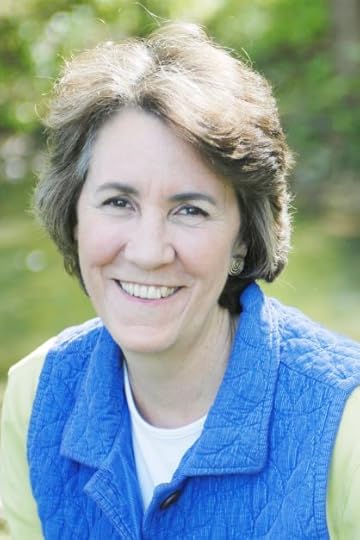 Elizabeth Winthrop Alsop
Elizabeth Winthrop AlsopLearn more about Elizabeth on her website.
Follow her on Facebook (Author Page, Book Page), Twitter, Goodreads, Instagram, and LinkedIn.
Buy the book from the publisher (Regal House Publishing), Amazon, or Bookshop.org.
October 19, 2022
I’ve Got Questions for Hedy Habra
Editor’s Note: This exchange is part of a series of brief interviews with emerging writers of recent or forthcoming books. If you enjoyed it, please visit other interviews in the I’ve Got Questions feature.
 The Taste of the Earth by Hedy HabraWhat’s the title of your book? Fiction? Nonfiction? Poetry? Who is the publisher and what’s the publication date?
The Taste of the Earth by Hedy HabraWhat’s the title of your book? Fiction? Nonfiction? Poetry? Who is the publisher and what’s the publication date?My latest book is a poetry collection titled The Taste of the Earth. It was published on July 1st, 2019 by Press 53
In a couple of sentences, what’s the book about?The collection is a “memoir in poems.” In The Taste of the Earth, poems weave together personal history with my cultural heritage within a broader perspective on history, language, and mythology. The book invites the reader to revisit Egypt’s mythical past and Lebanon’s turmoil, and my impressions upon returning there after twenty-five years.
One of the aspects that characterize The Taste of the Earth would be its formal experimentation. The collection alternates free verse with pantoums, prose poems, haibuns, and anima methodi poems, as well as persona poems told from the point of view of inanimate objects. A couple of long sections titled “Meditations” have complex forms. “Meditations Over Phoenician Letters,” is an abecedarian, and “Meditations Over the Eye of Horus,” is formed by a series of haibuns juxtaposing ancient rituals with more recent memories of Egypt and personal reminiscences. Both “Meditations” incorporate Arabic script as well as visual symbols and characters.
What’s the nicest thing anyone has said about the book so far?I think it would have to be Diane Seuss’ words: “As the focus here, often, is war and its devastations, witnessed and remembered, The Taste of the Earth is rife with sorrow songs, but each is moored by the speaker as a beholder of earth’s beauty as it pours in through the senses and finds a home in language: “[T]he jacaranda’s blue light anchors me back,” Habra writes, “whispering, yes, it’s here, deep inside, fluttering like a dove’s wings.”
What book or books is yours comparable to or a cross between? [Is your book like Moby Dick or maybe it’s more like Frankenstein meets Peter Pan?]I find this question compelling, but I am too close to my work to objectify it in this fashion and feel that readers might shed light on such connections.
Why this book? Why now?My first poetry collection, Tea in Heliopolis, chronicled my youth in Egypt alongside the impact of the Lebanese civil war that compelled us to leave Lebanon. The Taste of the Earth is an extension of Tea in Heliopolis, written from the perspective of exile and after having revisited Lebanon after two decades. It also offers a broader reflection on the aftermath of violence in the region.
Other than writing this book, what’s the best job you’ve ever had?I have a passion for languages and taught Spanish and Spanish literature for thirty-three years at Western Michigan University. I loved imparting my fourth language to students and watching their progress and enthusiasm.
What do you want readers to take away from the book?Readers interested in other cultures might get a deeper understanding of these countries’ different facets and complexities. Through a personal trajectory, these poems’ self-reflexivity represents a quest for truth that is universal.
What food and/or music do you associate with the book?I love to write while listening to a background of classical music. Despite our numerous displacements, I have always cooked Lebanese traditional recipes, such as kibbeh, tabbouleh, and meat pies seasoned with pomegranate, to name only a few, and my pantry is packed with relevant ingredients and spices. The Taste of the Earth is redolent with scents and fragrances associated with a sense of longing.
What book(s) are you reading currently?I am rereading The Monkey Grammarian, a poetic essay, or extensive prose poem by my favorite poet and essayist, Octavio Paz. I also read poetry every day from my piles of recently-acquired poetry collections.
 Hedy Habra
Hedy HabraLearn more about Hedy on her website.
Follow her on Facebook and Twitter.
Buy the book from the publisher (Press 53), Amazon.com, or Bookshop.org.
October 17, 2022
Happy Birthday to the Zhang Boys!
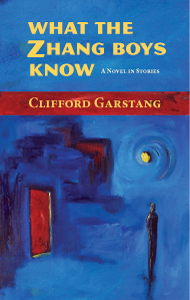
I am proud of all of my books, but I am especially fond of my second book, What the Zhang Boys Know, which was published by Press 53 ten years ago this month. The book received good reviews and won the Library of Virginia Literary Award for Fiction, an amazing honor.
To celebrate this milestone, I have a couple of events planned. First, on Wednesday, October 19, from 6:00-8:00 pm, I’m hosting a party at Accordia, a new wine bar at 114 E. Beverley St. in Staunton. Cheese and chocolate will be provided, wine and books (!) will be available for purchase, and there will be door prizes.
If you aren’t local to Staunton, you can still help me celebrate. Press 53, the publisher of What the Zhang Boys Know, is hosting an online event on Tuesday, October 25, at 7:00 pm as part of the press’s anniversary month. Publisher Kevin Morgan Watson and I will be discussing the book and talking about my other books and answering questions from the audience. Register for the event here.

October 13, 2022
I’ve Got Questions for Steven Mayfield
Editor’s Note: This exchange is part of a series of brief interviews with emerging writers of recent or forthcoming books. If you enjoyed it, please visit other interviews in the I’ve Got Questions feature.
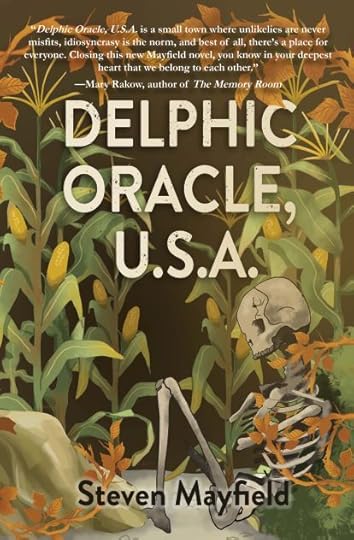 Delphic Oracle, U.S.A. by Steven MayfieldWhat’s the title of your book? Fiction? Nonfiction? Poetry? Who is the publisher and what’s the publication date?
Delphic Oracle, U.S.A. by Steven MayfieldWhat’s the title of your book? Fiction? Nonfiction? Poetry? Who is the publisher and what’s the publication date?Delphic Oracle, U.S.A.
Fiction
October 11, 2022
In a couple of sentences, what’s the book about?A love affair begun in 1925 realizes its destiny 90 years later, the mystery of a skeleton discovered in a vacant lot is solved, and the entangled lives of the citizens of a small town in Nebraska are untangled in this funny, poignant, and occasionally tragic story of how a place once known as Miagrammesto Station became home to the long-lost Oracle of Delphi.
What’s the book’s genre (for fiction and nonfiction) or primary style (for poetry)?Upmarket fiction
What’s the nicest thing anyone has said about the book so far?“I needed a refresher in my love for (John) Irving because I was so reminded of his work in the brilliant novel Delphic Oracle, U.S.A. by the gifted author Steven Mayfield.” Jim Alkon, Booktrib
What book or books is yours comparable to or a cross between? [Is your book like Moby Dick or maybe it’s more like Frankenstein meets Peter Pan?]It’s Sherwood Anderson’s Winesburg, Ohio meets anything by Jean Shepherd or perhaps Sinclair Lewis’s Main Street crosses paths with Carl Hiaasen’s Squeeze Me.
Why this book? Why now?This book went through several incarnations over a number of years. Thus, the “whys” of it evolved. Originally, it was an attempt to address a number of large issues and themes in a single narrative. The resultant grandiosity brought me back to Earth and I herded my big ideas into something readable. In the end, it’s about people trying to do the right thing despite their flaws and inclinations.
Other than writing this book, what’s the best job you’ve ever had?The last time I answered this question, I flippantly mentioned my gig in high school as a movie theater projectionist. However, my actual best job was in medicine. I was a neonatologist for about twenty-five years.
What do you want readers to take away from the book?I’d like them to feel a bit better about themselves and the world. That’s not always easy these days. Bad people get a lot of press. I thought it would be good to give some ink to folks who are simply doing the best they can with what they have to give.
What food and/or music do you associate with the book?It’s an American saga, so I should say, “apple pie.” However, there are a lot of ingredients in Delphic Oracle, U.S.A.’s recipe, so let’s go with “gumbo.”
What book(s) are you reading currently?Phillip Hurst’s Regent’s of Paris. Just finished Karla Huebner’s In Search of the Magic Theater, Barbara Quick’s What Disappears, and Michael Bourne’s Blithedale Canyon. All good reads. Next on my list: Loving the Dead and Gone by Judith Turner-Yamamoto.
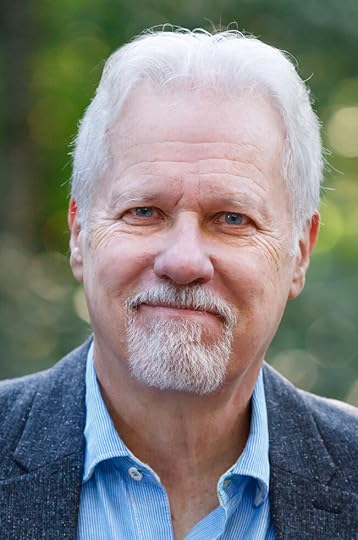 Steven Mayfield
Steven MayfieldLearn more about Steven on his website.
Follow him on Facebook, Twitter, and Instagram.
Buy the book from the publisher (Regal House Publishing), Annie Bloom’s Books, Rediscovered Bookshop, Barnes & Noble, Bookshop.org.
October 6, 2022
I’ve Got Questions for David Ebenbach
Editor’s Note: This exchange is part of a series of brief interviews with emerging writers of recent or forthcoming books. If you enjoyed it, please visit other interviews in the I’ve Got Questions feature.
What’s the title of your book? Fiction? Nonfiction? Poetry? Who is the publisher and what’s the publication date? What’s Left to Us by Evening by David Ebenbach
What’s Left to Us by Evening by David EbenbachWhat’s Left to Us by Evening is my third collection of poetry, published by the wonderful Orison Books and in print as of October 6, 2022.
In a couple of sentences, what’s the book about?The publisher’s description says it best:
“How does one live in a world that is both beautiful and broken—a world of cherry blossoms and gun violence, fellowship and political enmity, plague and rebirth? What’s Left to Us by Evening, David Ebenbach’s unsparing and timely new poetry collection, examines the obligation—and privilege—of carrying it all.”
What’s the book’s genre (for fiction and nonfiction) or primary style (for poetry)?The poetry is lyric and ranges from the anxious and melancholy to the awed and celebratory. I think you could say the same thing about the world we live in.
What’s the nicest thing anyone has said about the book so far?Aside from my family, you mean? Well, the poet Matthew Olzmann said, “the world in these pages is one made of equal parts grit and tenderness. It’s a world of work, violence, politics, and little apocalypses, but also singing, birdwatching, prayer, and flowers bursting into bloom.” I love that.
What book or books is yours comparable to or a cross between? [Is your book like Moby Dick or maybe it’s more like Frankenstein meets Peter Pan?]I think you might be able to produce something like my book if you put Ross Gay’s Catalog of Unabashed Gratitude and Jane Kenyon’s Otherwise into a pot over a low heat and stirred vigorously.
Why this book? Why now?This book came out of my feeling—and I think I’m not alone in this—that the world is both horrifying and breathtakingly beautiful. Anger and violence sit right alongside awe-inspiring natural wonders and community. Probably it’s always been this way, but the last few years have, for me and for others I know, increased the tension between these truths. I think the only honest way to approach the world we’ve got is by acknowledging the full range of what it offers—the threats and the gifts.
Other than writing this book, what’s the best job you’ve ever had?I really love teaching, and not only when I’m directly teaching students, which I do at Georgetown University. At Georgetown’s Center for New Designs in Learning and Scholarship (CNDLS) I also get to work with graduate students and faculty to support their ongoing development as teachers. I am delighted to help passionate, dedicated teachers become more and more the people they want to be in the classroom.
What do you want readers to take away from the book?I want readers to feel sobered by the challenges we’re facing as a society and as a species—and also inspired to hope, and work, for something better.
What food and/or music do you associate with the book?Funny you should ask—I recently created a playlist based on What’s Left to Us by Evening—think Air, Matisyahu, Susuma Yokota and Rothko, and George Winston—and the Largehearted Boy blog has posted it. Check it out!
What book(s) are you reading currently?I tend to be buried in a few books at any one time. As for poetry collections, I’m reading two really inspiring ones right now: Such Color by former US Poet Laureate Tracy K. Smith, as well as Melanie McCabe’s third book of poetry, Night Divers. And I’m also reading Clarice Lispector’s astounding first novel, Near to the Wild Heart.
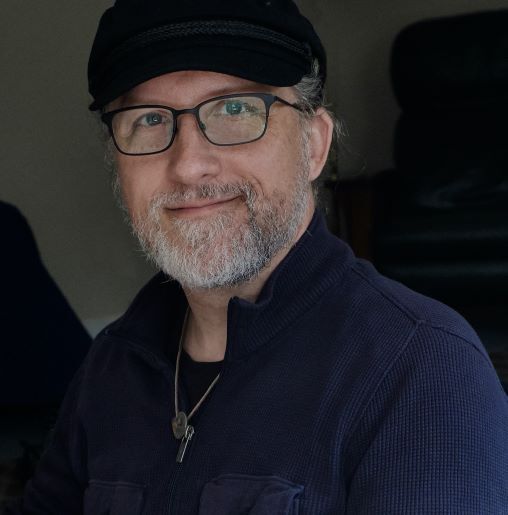 David Ebenbach (photo by Paige Critcher)
David Ebenbach (photo by Paige Critcher)Learn more about David at his website.
Follow him on Facebook, Instagram, or Twitter.
Buy the book from the publisher (Orison Books), Amazon, or Bookshop.org.
October 1, 2022
2022 Reading — September
Big reading month for me. I finished nine books!
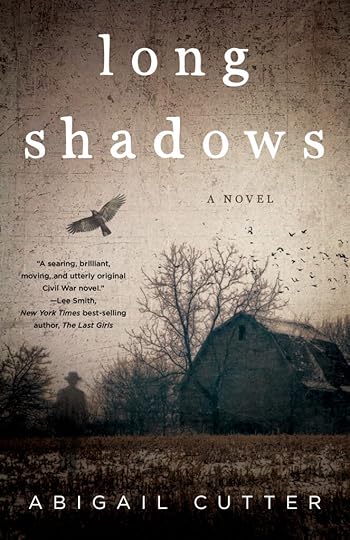 Long Shadows by Abigail Cutter
Long Shadows by Abigail CutterLong Shadows by Abigail Cutter is a novel set in my part of Virginia—just down the road, in fact—that is narrated by a ghost, with the story of his life told in flashbacks. Having come of age at the start of the Civil War, he joined the Confederate Army and survived through ferocious battles and a Union Army prison, then returned to the family home a deeply troubled and angry man. After his own death and the death of his wife and the last living occupant of the house, his widowed daughter, he remains, unable to move on. In the present, his peace is disturbed when a young couple (who turn out to be his grandson and his wife, although the ghost doesn’t know this at first) begin moving into the house they’ve inherited, disposing of his furniture, and modernizing the place for a weekend retreat. The wife senses his presence and attempts to communicate with him, but he wants no part of her. The author, whom I met at an event recently, says that the story is inspired by her own experience fixing up the old farmhouse her husband inherited, including her encounters with the ghost of her husband’s grandfather. The author did some great research for the Civil War portion of the book and the details are compelling.
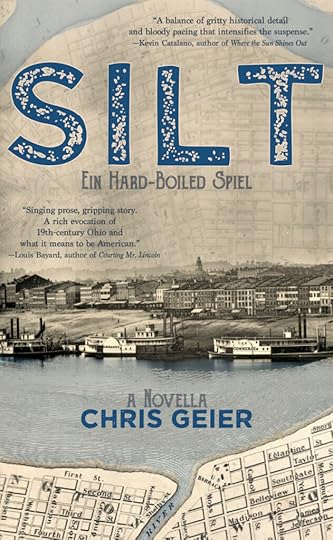 Silt by Chris Geier
Silt by Chris GeierSilt by Chris Geier is subtitled “ein hard-boiled spiel” and is a novella about Werner Bosenbach, a German immigrant in Cincinnati who in the mid-19th Century is an “investigator.” Basically, he does a variety of odd jobs, and in this instance, he is hired to find—and kill—the murderer of a steamboat captain. Because the captain’s steamship route allowed him to bring runaway slaves to Ohio, where they would be free, it is assumed that a notorious slave hunter is responsible for his death. Werner believes this also, at first. Indeed, it is a hard-boiled tale.
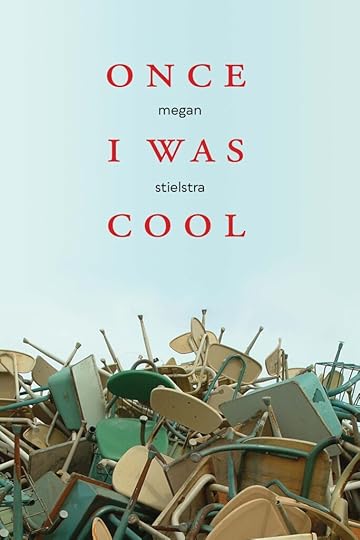 Once I Was Cool by Megan Stielstra
Once I Was Cool by Megan StielstraOnce I Was Cool by Megan Stielstra is a collection of personal essays originally published in 2014 but reissued by Northwestern University Press in 2021. The personal essay is an interesting form, but sometimes they stray too much into the personal realm for my taste. There’s a fair amount of navel-gazing here, and I suppose that’s what some people like in an essay, but I prefer pieces that look beyond the writer to draw some broader conclusions. Sure, some of these essays do that, but there’s a lot of episodic detail about, literally, sex, drugs, and rock & roll, that isn’t terribly meaningful for me. On the other hand, she writes about Chicago, which I do know, and Prague, which I also know a little, and writing, which I know, and teaching, which I also know. So, on some levels, I could relate.
 The Observant by Ravi Mangla
The Observant by Ravi ManglaThe Observant by Ravi Mangla is the story of a documentary filmmaker who is at first in a secret location in a Middle Eastern country to meet with dissidents to record their stories. After uploading the file of his interview and deleting it from his equipment in order to be safe and to keep the dissidents safe, he returns to the city and is arrested by the authorities anyway. He’s imprisoned and interrogated, but eventually, he is coerced/persuaded by the country’s dictator to make a film about his life. The political situation in the country is tenuous and everyone is afraid of the dictator, including his wife and security guards. This book is riveting and beautifully written, and, though short, manages to tell in some detail the stories of the filmmaker, the dictator, and the dictator’s wife. Highly recommended.
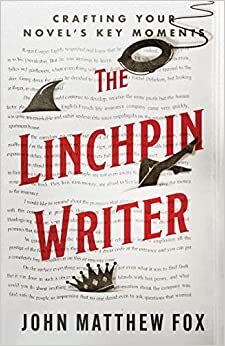 The Linchpin Writer by John Matthew Fox
The Linchpin Writer by John Matthew FoxThe Linchpin Writer by John Matthew Fox is a new craft book that focuses on the most important elements of a novel—the opening, the first line of dialogue by the protagonist, the experience of emotion, etc. It’s an approach I haven’t seen before, and Fox’s style is charming and chatty. Fox runs the entrepreneurial website Bookfox, where he dispenses advice, offers classes, and generally makes himself useful to the writing community. And now he has a book (other than his own collection of short stories) that he can sell to his many followers. Smart. Anyway, it’s a good book, and not just for beginners. It gave me a lot to think about.
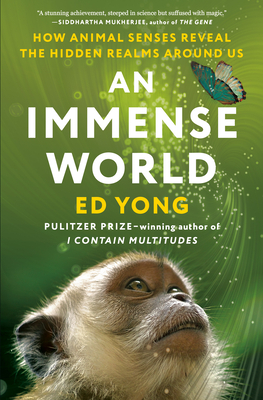 An Immense World by Ed Yong
An Immense World by Ed YongAn Immense World by Ed Yong is an impressive achievement that I convinced my book club to read this month. The message, as I understand it, is two-fold. First, humans need to realize that the creatures who share this planet with us perceive things very differently from us. Second, light and sound pollution need to be recognized as threats just as water and air pollution, all of which threaten the existence of other animals. The second message is reserved for the final chapters of the book, after Yong has amassed an enormous amount of amazing detail about animal senses. It’s compelling, if somewhat overwhelming.
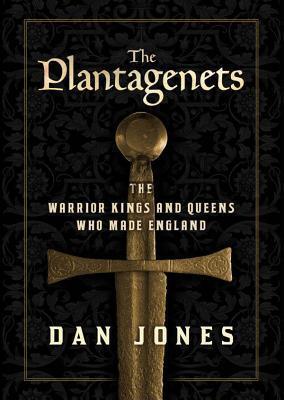 The Plantagenets by Dan Jones
The Plantagenets by Dan JonesThe Plantagenets by Dan Jones is a fascinating story that covers the Plantagenet Dynasty in England from 1154 when the reign of Henry II begins to 1399 when Henry IV is crowned and becomes the first king of the House of Lancaster (not technically directly in the Plantagenet line because he is the cousin of the previous king, Richard II, and not his son). It’s endlessly fascinating with intrigue, plots, wars, rivalries, beheadings, etc. It’s a long book, but still easy to follow, although don’t expect to remember all the dates and the enormous cast of characters. My own interest in the Plantagenets comes from both Shakespeare and my own ancestry. In addition to having a paternal line that came from Lancashire to the US (the basis of my Lancastrian allegiance in Shakespeare’s plays about the War of the Roses), I’ve also traced my line through an ancestor on my mother’s side to John of Gaunt (father of Henry IV and son of Edward III (and therefore, running the lineage back to the first of the dynasty, Henry II). [Note: This isn’t as special as it sounds. If you go back 20 or so generations, there are several million people from whom you are descended in that generation, but it is fun to be able to name a particular member of that generation who is notable in history.]
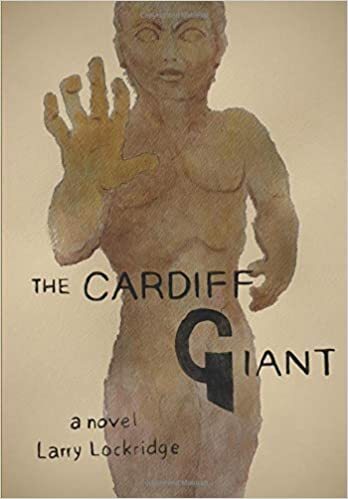 The Cardiff Giant by Larry Lockridge
The Cardiff Giant by Larry LockridgeThe Cardiff Giant by Larry Lockridge is a fast-paced, outlandish, and entertaining short novel, the first volume of a quartet of books. An investigative reporter from the Discovery Channel arrives in Cooperstown NY to investigate the disappearance of the “Cardiff Giant”–a petrified statue of mythical proportions. He encounters a crazy cast of characters, including a seductive pair of sisters, who only feed his own insecurities and superstitions. This is a fun romp by the author of Shade of the Raintree, a terrific biography of the author’s father, Ross Lockridge Jr., author of Raintree County, a great novel you’ve probably not read or even heard of. (Possibly you have heard of a movie that was made from the book, but the movie pales in comparison.)
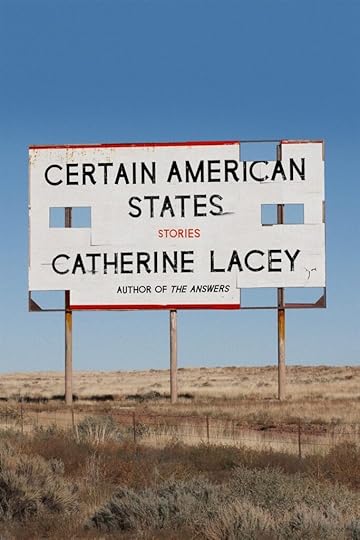 Certain American States by Catherine Lacey
Certain American States by Catherine LaceyCertain American States by Catherine Lacey is a collection of stories that was well done but, at times, seemed too familiar—to other stories I’ve read and also to each other. Toxic relationships, departed spouses (dead or just gone), and main characters at a loss for what to do next. A couple of the stories have male narrators, but it wasn’t clear that they were male until fairly deep into the story. One story that may stick with me is the weirdest of them, about a man who learns while staying at a hotel on a business trip that he’s been fired. In the end, it struck me as being good Kafka.
September 14, 2022
I’ve Got Questions for Kerry L. Malawista
Editor’s Note: This exchange is part of a series of brief interviews with emerging writers of recent or forthcoming books. If you enjoyed it, please visit other interviews in the I’ve Got Questions feature.
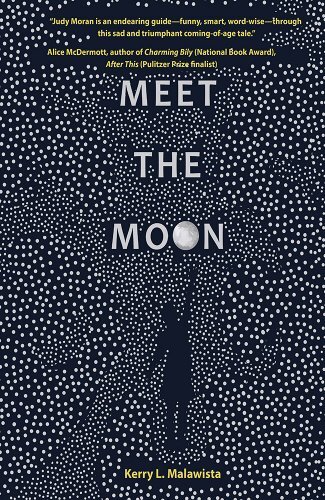 Meet the Moon by Kerry L. MalawistaWhat’s the title of your book? Fiction? Nonfiction? Poetry? Who is the publisher and what’s the publication date?
Meet the Moon by Kerry L. MalawistaWhat’s the title of your book? Fiction? Nonfiction? Poetry? Who is the publisher and what’s the publication date?Meet the Moon is fiction, for YA and adult audiences.
Publisher – Regal House (Fitzroy Books), September 15, 2022
In a couple of sentences, what’s the book about?In 1970, 13-year-old Jody Moran’s mother dies in a car accident that almost kills her little brother. Meet the Moon is a novel about how Jody will find and lose her mother, again and again, until she can keep alive the memories of a mother who loved her.
What’s the book’s genre (for fiction and nonfiction) or primary style (for poetry)?YA and cross-over adult literary fiction
What’s the nicest thing anyone has said about the book so far?Alice McDermott, National Book Award winner and Pulitzer Prize Nominee, said:
Jody Moran is an endearing guide – funny, smart, word-wise – through this sad and triumphant coming-of-age tale. There is such clarifying honesty here, about grief, friendship, resilience, and faith. There is as well a keen and vivid sense of an era that seems more innocent than our own and yet remarkably timeless, perhaps because Kerry Malawista understands so well the enduring grace of family love.
Jennifer Richard Jacobson, author of SMALL AS AN ELEPHANT, said. Meet the Moon is delightfully poignant and equally funny, this story reminiscent of Judy Blume will no doubt steal the hearts of readers of all ages—just like it did mine.”
What book or books is yours comparable to or a cross between? [Is your book like Moby Dick or maybe it’s more like Frankenstein meets Peter Pan?]Meet the Moon’s protagonist, 13-year-old Jody Moran, is Scout Finch in To Kill a Mockingbird meets Margaret in Judy Blume’s, Are You There God? It’s Me, Margaret.
Why this book? Why now?In our current times, with our scarcity of strong, empathic male leaders it is critical and refreshing to have a loving, engaged father. Unlike many fathers in fiction, Jody’s dad is his daughter’s advocate. He tells her she can be president; visits a bully’s house to lecture the boy’s dad; takes Jody to buy her first bra, insisting that a dismissive saleswoman fit her. His progressive parenting helps the five kids—four of them girls—cope with their mother’s loss. Jody’s father teaches his children to believe in the “Power of Intention” – announce what you want to the world and you can make it happen.
While Meet the Moon takes place in 1970, today’s teens are dealing with loss, perhaps now more than ever in post-Covid-time. It is essential for kids and teens to feel they are not alone with loss, to see there is still a positive future ahead. And for parents to see how a loving, stable consistent parent can make all the difference when a child faces a loss.
Other than writing this book, what’s the best job you’ve ever had?While writing, I am privileged to work as a psychotherapist, forming deep connections with my patients, hearing their stories of loss and love and helping them find their way through troubled times.
Psychotherapy is much the same pursuit as writing, putting into words something imagined, felt, or experienced by a patient. In writing and therapy, I get to explore not only what lies beneath and within those words and come to understand the power they have over us.
What do you want readers to take away from the book?The title, Meet the Moon, comes from Frost’s poem, Going For Water, where the speaker and companion children go in search, across barren land, for a brook that still runs. Frost writes that “we knew we heard the brook,” and that they “run as if to meet the moon.” He captures the jubilance and hope, the necessary belief that all must have to find what they are looking for. I’d like readers to take away this same feeling, that despite the loss of a mother – the moon – Jody (and reader) discover that there is more to be found in the world, that the brook never runs dry.
What book(s) are you reading currently?Currently I am reading Lessons in Chemistry by Bonnie Garmus. A wonderfully written novel with an endearing, quirky, smart protagonist. Garmus captures the early 60’s culture and the many ways women were limited by stereotypes and paternalistic work places. Inspiring, and at moments, laugh out loud funny.
What food and/or music do you associate with the book?The Morans’ are a blue-collar Irish American family, that never traveled beyond New Jersey and only know plain traditional cooking. Grandma Cupcakes, when she isn’t bringing home cupcakes from her assembly line job at Hostess factory, is making Slumgullion stew, a meal consisting of whatever is left over from the past several days of meals. The Moran kids are horrified to find boiled potatoes, roast beef, beets, peas, corn, and fish all in one dish! A distasteful array of colors—green, yellow, brown, purple, all mashed together. The sour and vinegary smells just as varied and nasty.
Meet the Moon includes a variety of popular music from the 70s, most especially The Beatles. The importance of the Fab 4 is clear when Jody and her sisters make up a game they call, Beatle Baseball. An indoor game played with a nerf ball, an umbrella bat and four Beatle Beatle’s vinyl album covers as bases. The White Album as first base, Let it Be, second, and third a Sgt. Peppers cover. When the batter makes a hit, they are required to sing a song from the particular album that covers the base they are running towards.
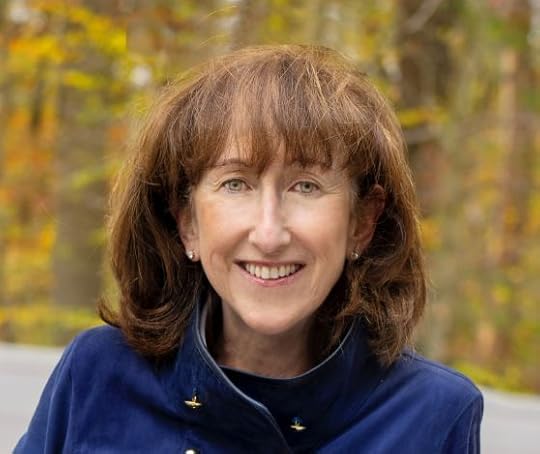 Kerry L. Malawista
Kerry L. MalawistaLearn more about Kerry on her website.
Buy the book from the publisher (Fitzroy Books/Regal House Publishing), your local independent bookseller, Amazon, or Bookshop.org.



